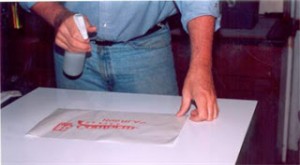Using an application fluid can aid the application of a vinyl films that have an aggressive adhesive system. The application fluid helps float the graphic onto the surface to prevent pre-adhesion (the vinyl sticking before you want it to). Nevertheless, for most vinyl installations, you should not apply the graphics wet, especially if you can do a dry application. ‘
That golden rule of decal application was true thirty two years ago, when I started in the fleet graphics business. And it still holds true today. While there are some exceptions to this rule, here are some instances when the rule should never be broken:
1. Clean the substrate by wiping it with a rag saturated with solvent. Then dry the surface with a lint-free paper towel before the solvent dries.
 2. If the graphics release with difficulty from the release liner, rub the back of the liner against a sharp edge of your work bench. This step helps break the bond between the graphic and the release liner.
2. If the graphics release with difficulty from the release liner, rub the back of the liner against a sharp edge of your work bench. This step helps break the bond between the graphic and the release liner.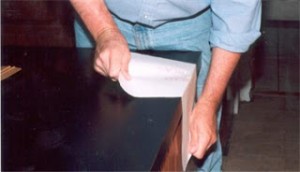
3. Peel the liner from the back of the graphics, rather than trying to pick the graphics off of the liner.
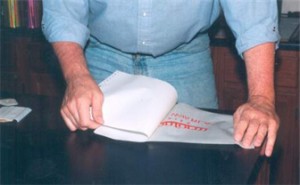
4. Lightly mist the substrate with application fluid. Use the least amount of fluid to accomplish the application process.
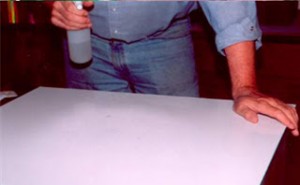
5. Usually spraying the adhesive side of the graphics with application fluid is unnecessary, unless applying large panels. Spraying cut vinyl letters with fluid can also cause the lettering to loosen up on the application tape or cause the lettering to fall off.
6. When squeegeeing the graphics, use good pressure to force all of the fluid from under the vinyl film. Start in the center of the graphic and squeegee outward to force out the fluid from underneath the graphics. Remember, you’re applying a pressure-sensitive film. It’s called “pressure-sensitive” for a reason, so apply some pressure.
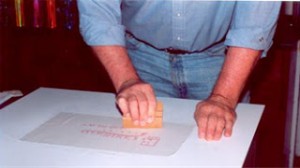
7. If the application tape releases with difficulty from the graphics, spray the tape with fluid allowing about 30 seconds for the fluid to soak in.

8. In removing the application tape, peel the tape 180º against itself. After removing the application tape, mop up the residue with a paper towel.
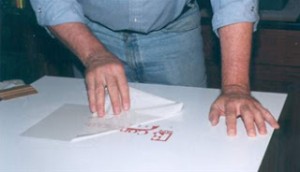
9. After removing the application tape, resqueegee the entire graphic with a squeegee covered with a low-friction sleeve. The low-friction sleeve protects bare vinyl from scratches caused by a hard squeegee. This step is essential in preventing edge lifting.
10. Complete the job by post heating the entire graphic with an electric heat gun. Post heating ensures good adhesion and will cause surfaces scratches on the vinyl to disappear.
Tip: In performing wet applications, some application tape adhesive systems can leave a milky residue on the surface of the applied graphics. In most cases, you can clean off this residue from the vinyl film with Rapidtac’s RapidPrep cleaner.
As seen on hingstssignpost.blogspot.com

